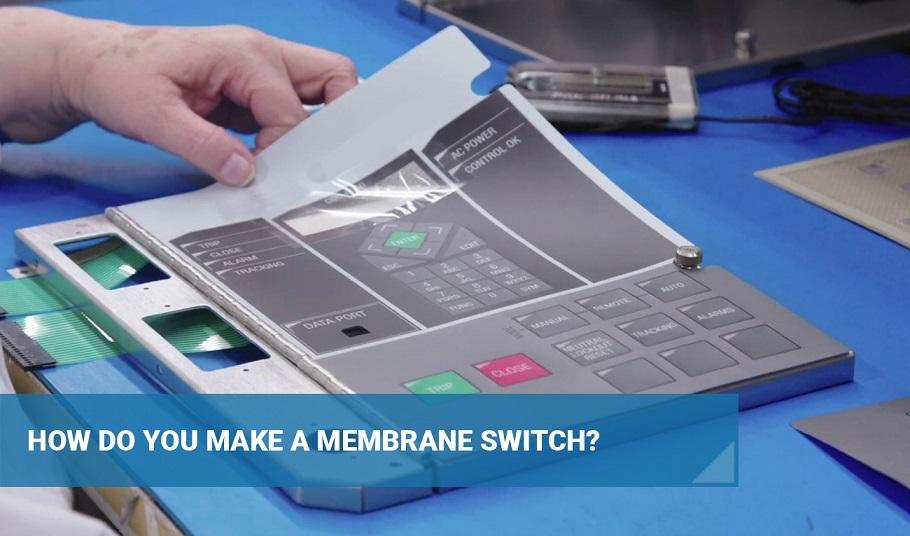Exactly How Membrane Layer Switches Add To the Toughness of Electronic Control Panels
Membrane switches play an essential role in improving the longevity of electronic control panels, mainly via their multi-layered building and construction which gives reliable security against environmental elements such as dampness and dust. The lack of relocating parts substantially reduces the probability of mechanical failings, making membrane layer switches over perfect for requiring applications.
Meaning of Membrane Layer Buttons

Membrane buttons are designed to be thin and light-weight, making them suitable for applications where space is restricted. They can be made in various shapes, sizes, and colors, using adaptability in design that meets aesthetic and practical needs. Additionally, membrane switches can integrate different modern technologies, such as responsive responses and LED indications, enhancing user experience.
Due to their construction, membrane switches are commonly resistant to dust, wetness, and general wear, adding to their toughness sought after settings. Their smooth style not only helps with simple cleaning but also minimizes the risk of mechanical failing, making them a recommended selection for makers looking for trustworthy interface in their electronic control panels.
Protection Versus Ecological Aspects
The style of membrane switches over naturally supplies a degree of protection versus different environmental factors, which is essential for keeping performance in challenging problems - Membrane Switch. These buttons are usually constructed with layers of adaptable products that shield internal parts from wetness, dust, and impurities. By enveloping the circuitry, membrane layer changes reduce the risk of brief circuits and rust, which can considerably impair efficiency
Additionally, the use of durable adhesives and sealers during manufacturing improves their resistance to ecological difficulties. Membrane buttons can endure direct exposure to chemicals and solvents, making them suitable for sectors such as food processing and medical care, where hygiene and tidiness are critical. Their smooth surface area layout also stops the buildup of dust and germs, assisting in less complicated cleaning and upkeep.
Temperature variations are one more ecological worry, and membrane layer switches are crafted to function successfully throughout a vast array of temperatures (Membrane Switch). This versatility makes certain that control panels stay functional in various settings, from commercial settings to consumer electronics
Influence On User Communication
User interaction with digital control board is considerably affected by the layout and functionality of membrane switches. These switches supply a responsive user interface that enhances the overall individual experience, permitting instinctive navigating and control. Their receptive official site nature ensures that individuals get instant responses upon activation, which is crucial for tasks needing accuracy and effectiveness.
In addition, the smooth surface area of membrane layer switches over facilitates easy cleaning and maintenance, promoting user confidence in the reliability of the interface. This cleanliness is particularly vital in environments where hygiene is critical, such as medical or food processing setups. In addition, the portable and light-weight style of membrane switches adds to the visual allure of control board, motivating customer involvement with a contemporary and smooth look.
Furthermore, the integration of aesthetic components, such as published symbols and backlighting, helps individuals rapidly determine features, decreasing the discovering curve related to brand-new tools. Therefore, individuals can operate tools better, bring about boosted productivity and complete satisfaction. In recap, membrane layer switches play a crucial function in enhancing customer interaction by combining capability, appearances, and simplicity of use, inevitably resulting in boosted operational efficiency.
Style Flexibility and Modification
Design adaptability and customization are crucial elements of membrane layer switches, making it possible for producers to customize electronic control board to specific applications and individual needs. This versatility permits the combination of numerous design components, such as shades, graphics, and structures, which can boost the visual charm and customer engagement of the control board.
Membrane layer switches can be personalized in shapes and size, suiting a variety of tools and applications, from industrial machinery to customer electronics. This adaptability makes certain that producers can produce instinctive user interfaces that align with individual assumptions and functional requirements. Additionally, the capability to integrate one-of-a-kind features such as backlighting or tactile comments additionally boosts use, permitting a more interactive experience.
Furthermore, the production procedure for membrane layer switches over sustains the rapid prototyping of designs, making it possible for producers to repeat and fine-tune their ideas swiftly. This ability not just speeds up the development timeline yet likewise ensures that the end product fulfills certain useful and visual standards.

Cost-Effectiveness and Durability
Cost-effectiveness and durability are significant advantages of membrane layer buttons, making them an eye-catching choice for makers and end-users alike. These switches are usually more economical to produce than typical mechanical buttons, mostly because of their simplified production procedures and the decreased number of parts called for. This expense advantage expands not just to initial manufacturing yet likewise to long-term functional costs, as membrane buttons commonly need much less upkeep and have a lower failing rate.
Moreover, the long life of membrane switches adds to their overall worth. Built from resilient products, they are resistant to ecological elements such as moisture, dirt, and chemicals, which can result in early wear in other switch kinds. The lack site link of relocating parts decreases mechanical failure, permitting membrane switches over to maintain capability over extended durations.
This sturdiness is particularly valuable in applications requiring regular performance under demanding problems, such as medical gadgets and commercial equipment. Inevitably, the combination of cost-effectiveness and durability makes membrane layer switches an economically sensible choice for makers, providing trusted options that hold up against the test of time while optimizing budgetary considerations.
Conclusion
In conclusion, membrane buttons dramatically enhance the sturdiness of electronic control panels through their durable building and construction and safety functions - Membrane Switch. Generally, membrane layer changes represent a reputable and affordable choice for improving the long life and performance that site of electronic control systems.
Comments on “The Duty of a Membrane Switch in Modern Touch Interfaces and Controls”